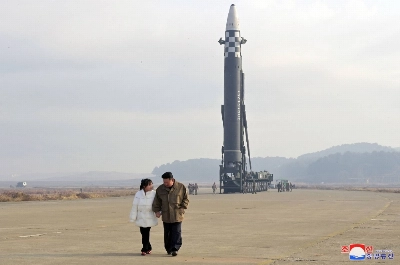North Korea announced Thursday that it was “immediately” leaving a 2018 inter-Korean agreement that was intended to reduce tensions, state-run media said, after Seoul partially suspended the deal a day earlier in protest of Pyongyang’s launch of a military spy satellite.
“We will withdraw the military steps, taken to prevent military tension and conflict in all spheres including ground, sea and air, and deploy more powerful armed forces and new-type military hardware in the region along the Military Demarcation Line,” the North’s Defense Ministry said, according to a statement carried by the official Korean Central News Agency.
Nuclear-armed Pyongyang said it would not be restrained by the agreement any longer, the report said, adding that the country would “immediately restore all military measures that have been halted.”




















With your current subscription plan you can comment on stories. However, before writing your first comment, please create a display name in the Profile section of your subscriber account page.